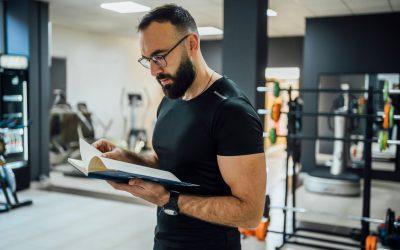22. Client Journey – Initial Consultations, Range of Motion Fitness Business Series
 So you’ve arranged the meeting and your potential client has arrived. First impressions matter. Immediately, they’ll be able to sense your culture and core values and within seconds will have calculated whether they match their own. If your culture is poor, you’ve already lost. Fix that first before you try to bring in new clients who will either leave, or continue to breed poor culture. Remember, they’re out of their comfort zone and in a new environment, so be mindful of their first physical experience with your business.
So you’ve arranged the meeting and your potential client has arrived. First impressions matter. Immediately, they’ll be able to sense your culture and core values and within seconds will have calculated whether they match their own. If your culture is poor, you’ve already lost. Fix that first before you try to bring in new clients who will either leave, or continue to breed poor culture. Remember, they’re out of their comfort zone and in a new environment, so be mindful of their first physical experience with your business.
This is where you can start to introduce ‘moments’. Offer them a bottle of water from the fridge. Introduce them to some of you current clients. With Range of Motion Business Mentoring clients we teach that these tiny little moments add up to more than you might think. Offering them a drink as soon as they walk in the door might be more powerful, and tell them more about your business, than 30 minutes of talking.
We’ve talked about the changing priorities at every level of the journey, the priority now is to book them in for a complimentary consultation to experience your service. The less friction as we go from one step to the next, the better.
Sit down with them to start your chat. Quiet is good, but activity is better. It’s a chance for them to be immersed in your environment and culture. Remember, if the culture is good, it will be a major selling point. Give them almost your full attention, but no so much that you’re not saying ‘hello’ to people as they walk in or ‘goodbye’ to people who leave. Culture.
Start by learning about them. Ask them about their day. What do they do for work? Where do they live? They’re not a ‘prospect’, they’re another person, and a person you’re looking to build a relationship with. Relationships matter. Then, you can switch in to ‘helping mode’. Start by being vulnerable, it’s a great way to allow them to be the same. Empathise with their situation, tell them about a time you entered a new environment and let them know you felt a bit anxious and unsure, so you completely understand how they feel – let them know it’s normal. A great conversation starter once you’ve got to know them is ‘how can we help… what can we do for you?’. Then shut up and listen, because they’re about to tell you everything you need to know to create a long-term and mutually beneficial relationship with them. Everything you need to know to create a long-term client journey. Take notes, ask questions, guide the conversation, but let them do the talking. They’ll tell you about their pain points – the problems they need solving.
Then it’s time to tell them how you’ll solve their problems. And this comes back to your unique selling point. What do you do better than anyone else? Explain your USP and then relate it to how you’ll solve their problems. In the end, they’re sitting down with you to find a solution they can’t find on their own. Offer them this solution and explain how you’ll achieve it for them. Then ask them ‘does this sound like what you’ve been looking for?’. If the answer is ‘no’, dig deeper and find out why they’re not happy with your solution. Sometimes you just won’t be the right fit. Suggest somewhere that will be better for them. Goodwill goes a long way. In the vast majority of cases (if you’re a good listener and a good problem solver), there answer will be ‘yes’.
Here’s what to say next: “Ok, what I’d like to do is organise a complimentary one-on-one session for you with one of our staff (or with you if you’re not referring them to staff). It’s an opportunity for you to take us for a test drive – a bit of a taste test. From there we can work out if what we do is what you’re looking for.”
Book the consult. This is the next step of their journey. Ask them if there’s anything you haven’t covered that they’d like to ask.
Make a time to sit down with the staff member (if it’s not you) and give them some context and background on the potential client.
The next step is to take them through their complimentary consultation. The purpose her? To book them for their first paid session. The composition of their complimentary consult will vary based on the nature of your business, but basically, you want to give them a little taste of every element of your business. Explain that you won’t be able to cover everything in detail, but that you just want to give them a cross section of how you can help. This may include some exercise (with great coaching where you teach them something new), partner assisted stretching, some release work, a chat about nutrition or sleep, or anything else you offer as part of your experience. Don’t forget their pain points, and keep bringing the conversation back to how what you’re doing with them will solve their problems.
If you do your job here, they’ll wonder how they ever survived without you. You’re looking for a ‘where have you been all my life?!’ response. They’ll want to book their first paid session. If they don’t it’s your fault. You need to show that the value you’re providing them is more than (or at worst, equal to) the value they’ll be providing you (their time and money). If you haven’t shown them this value, you weren’t good enough, and need to be better at what you do – get to work on professional development.
Otherwise, they become a client. You may have converted them to the next stage of their journey, but really, it’s only just beginning. In the next part of this series, we’ll cover the journey of a paying client.




